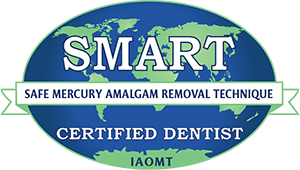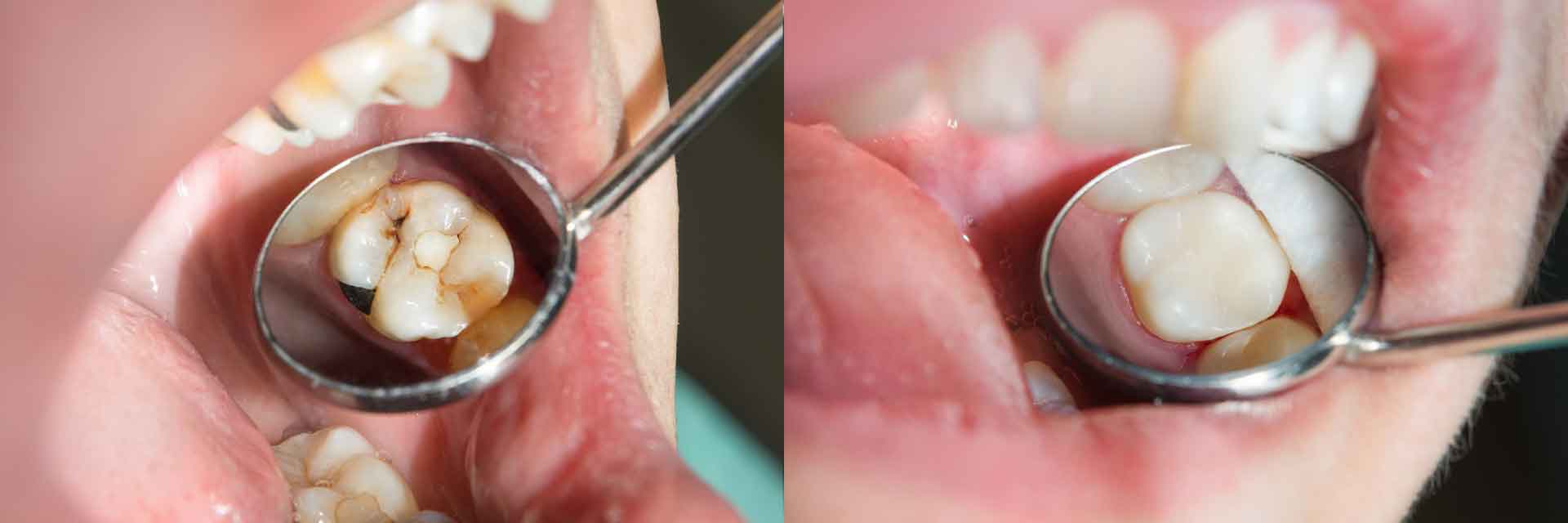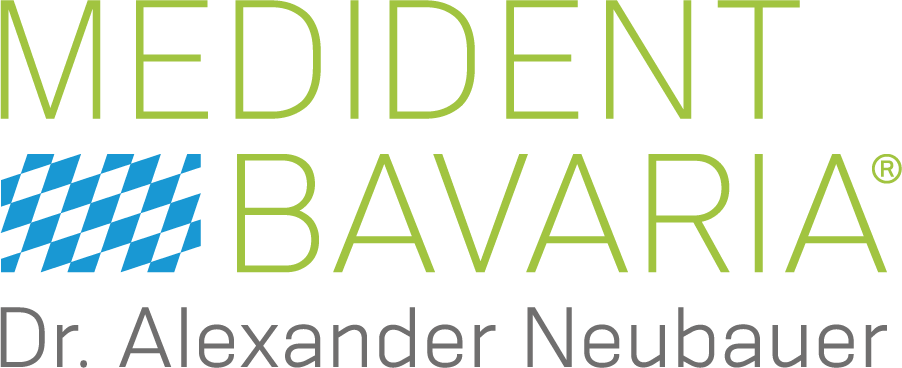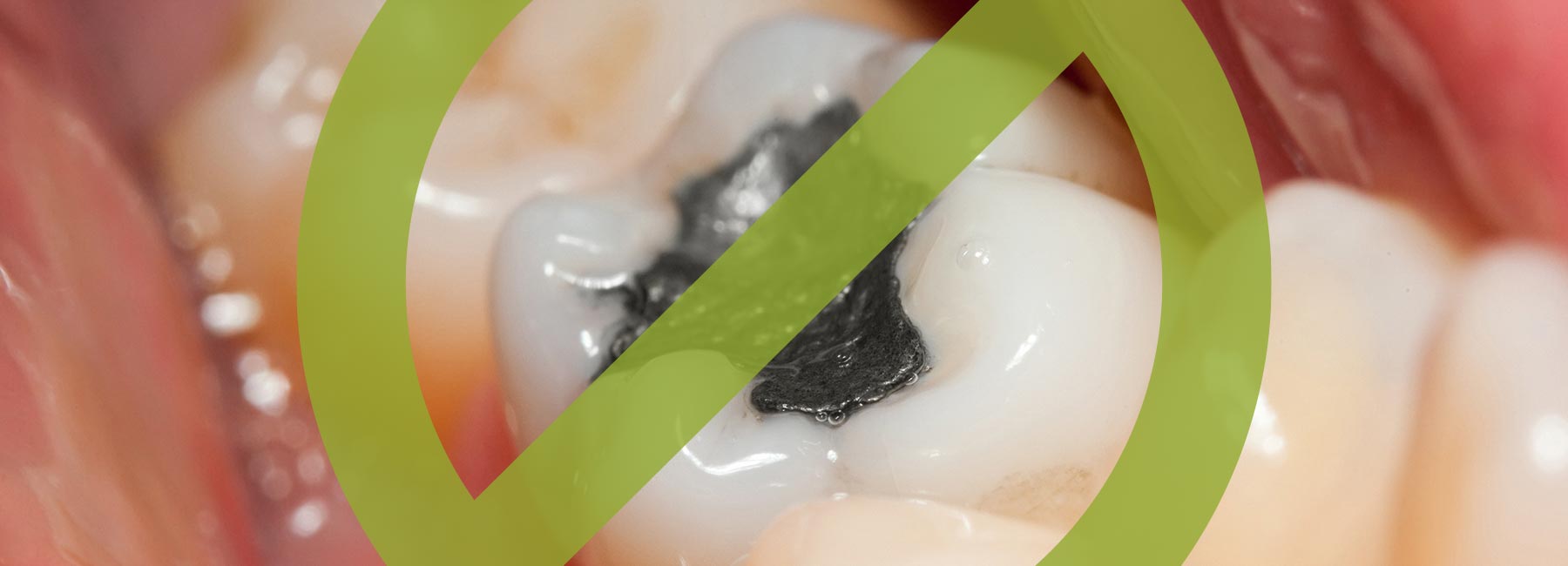Amalgamsanierung
In der biologischen Zahnheilkunde haben wir die Auswirkungen unserer Behandlungen auf den Organismus und die allgemeine Gesundheit unserer Patienten immer im Blick. Wir verzichten daher auf Amalgam und andere Metalle bei Zahnfüllungen oder beim Zahnersatz.
Wir sind die einzige „SMART“ zertifizierte Praxis für Amalgamsanierungen in ganz Deutschland.

Gesundheitsrisiko Amalgam?
Die gesundheitlichen Risiken sind Gegenstand zahlreicher Studien und dennoch wird Amalgam weiterhin in vielen Zahnarztpraxen verwendet. Dabei ist der Füllstoff schon seit der Einführung aufgrund seiner Zusammensetzung mehr als umstritten.
Vor allem dort, wo verschiedene Metalle (wie Gold, Silber und Amalgam) im Mund aufeinandertreffen, können erhöhte Quecksilberwerte die Folge sein. Die Metalle können in Form einer elektrochemischen Korrosion miteinander reagieren und können so möglicherweise verstärkt Quecksilberpartikel aus dem Amalgam freisetzen. Auch andere Schwermetalle – wie Kupfer oder Zinn – können durch Abrieb über die Blutbahn in den Organismus gelangen.
Amalgam ist eine Legierung des Schwermetalls Quecksilber mit anderen Metallen, wie Silber, Kupfer, Indium, Zinn und Zink. Die Verarbeitung von reinem Quecksilber und der hohe Quecksilbergehalt (etwa 50 %) haben bereits sehr früh eine Diskussion über mögliche Gesundheitsgefährdungen ausgelöst. Quecksilber ist ein giftiges Schwermetall, das vor allem in Form von Quecksilberdampf aufgenommen wird. Unser Körper speichert Quecksilber vorwiegend in der Leber, den Nieren, den Nerven und im Gehirn.

Amalgamsanierung in der biologischen Zahnheilkunde
Wie Sie jetzt wissen, enthält Amalgam das hochgiftige Quecksilber. In unserer biologischen Zahnarztpraxis in Tittling helfen wir Patienten aus Passau und der gesamten Region schon seit vielen Jahren, indem wir ihren Mund konsequent von Metallen aller Art befreien.
Dazu gehört natürlich auch die schonende und sicher Entfernung von Amalgam-Füllungen. Die Sicherheit fängt schon beim Bohren und bei der Isolierung der Zähne an und beinhaltet mehrere Schutzmaßnahmen*:
- Kofferdam: Zum besseren Schutz vor den Quecksilberdämpfen beim Einatmen legen wir einen Kofferdam an. Dieses Spanngummi auf einem Metallrahmen isoliert den Zahn vom Rest der Mundhöhle und den oberen Atemwegen. Somit entsteht ein Schutz gegen Dämpfe und Bohrstaub. Amalgamreste gelangen nicht mehr in den Mundraum und können nicht verschluckt werden.
- Spezialabsaugung: Eine Spezialabsaugung reduziert die Belastung durch Quecksilberdämpfe um über 90%. Amalgamreste und Dämpfe werden direkt am Zahn abgesaugt.
- Sauerstoff: Zusätzlich können wir Sie während des Bohrens mit zusätzlichem Sauerstoff versorgen – mit Hilfe einer Sauerstoffbrille und eines Sauerstoffgerätes.
- Spülen mit Natriumthiosulfat: Dies bindet und neutralisiert das noch im Zahngewebe zurückbleibende Amalgam, das durch Ausbohren nicht erreicht werden kann.
- Spezialbohrer: Es werden nur extra dafür entwickelte Bohrer mit einer speziellen Verzahnung verwendet, die eine minimale Erhitzung der Füllung und somit eine möglichst geringe Freisetzung der Quecksilberdämpfe gewährleisten.
- Niedrige Drehzahl: So wird die Entstehung von Quecksilberdampf reduziert.
- Aushebeln: Es wird nur so wenig wie möglich und so viel wie nötig gebohrt. Die Entfernung der Amalgamfüllung durch Aushebeln hat Vorrang. Das Aushebeln hat den Vorteil, dass giftige Quecksilberdämpfe gar nicht erst entstehen und eingeatmet werden können.
Keramik: Der biokompatible Werkstoff für Ihre Gesundheit
Zurecht werden Sie sich jetzt die Frage stellen:
„Welche Alternative gibt es für Allergiker und Menschen, die an Unverträglichkeiten leiden, wenn Metalle nicht in Frage kommen?“
Wann immer es möglich ist, versorgen wir unsere Patienten mit Zahnersatz aus reinweißer Hochleistungskeramik. In unserem hauseigenen Labor fertigen wir kleinere und größere Füllungen (Inlays), Teilkronen und Kronen, um Ihre Zähne so natürlich wie möglich zu sanieren. Den Zahnersatz befestigen wir mit speziellen Zementen – für eine maximale Verträglichkeit.



